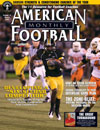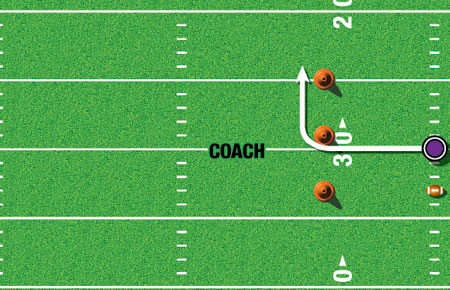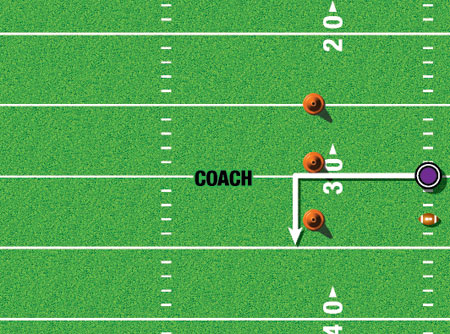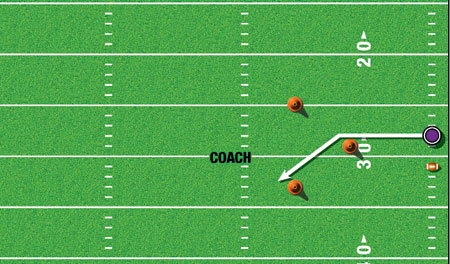Article CategoriesAFM Magazine
|
Wide Receiver Separationby: Kevin JohnsRunning Backs Coach, Northwestern Univer © More from this issue On behalf of Northwestern University, Head Football Coach Pat Fitzgerald, and the entire Northwestern Football Program, I would like to thank American Football Monthly for allowing me to share some of our wide receiver drills with you. We are a part of a great profession that shares coaching points freely. I’m honored to share with you a separation drill series that has been very productive for our wide receivers. At Northwestern, we run a spread, four-wide receiver offense that allows our skill players (WR, RB, QB) to utilize their athletic abilities and make plays in space. In order for our offense to be successful, we feel it is critical that our WRs get down the field fast and execute routes with perfect fundamental technique. To improve our route-running skills, we have developed a series of drills that our wide receivers do every day to emphasize steps, pad level, and cutting off the correct foot. In our separation technique drill series, our wide receivers will work a Speed Cut, Square Cut, Jab Cut, and a Forty-Five Degree Cut. These drills will correlate to our quick game and to the last four or five steps of the routes for our drop-back game. These drills are beneficial to our wide receivers because they can work on proper technique without tiring themselves out for the rest of practice. Three main coaching points apply to each cut: keeping the eyes and body straight ahead, maintaining a low pad level, and finishing the route. The first two points decrease what we at Northwestern call “indicators,” or anything that gives the defensive back a clue about what route they are defending. Keeping good body and eye position eliminates indicators by forcing a defensive back to stay in his pedal while the wide receiver closes his cushion. Maintaining a low pad level reduces the amount of time a defensive back has to react to a cut, while finishing the route maximizes separation. Each drill starts with the wide receivers standing on a yard-line perpendicular to the field. The first cut that we work is the Speed Cut (See Diagram 1).
The most important part of all cuts is the finish. As the wide receiver plants their fourth step in the ground and begins to run out of the cut, it is imperative that they violently rip their outside elbow around to force their eyes and chin back to the quarterback. The rip also turns their shoulders back downhill, preventing the wide receiver from drifting away from the ball. The third cut in our separation technique series is what we call a Jab Cut (See Diagram 3).
The final cut in this drill series is what we call a Forty-Five Degree Cut (See Diagram 4).
Kevin Johns is in his sixth season as a full-time Northwestern assistant, and his fourth as the Wildcats’ WRs coach. He coached Northwestern’s RBs in 2004 and 2005. Johns also was appointed the program’s recruiting coordinator in July of 2006, a position he held until January of 2008 when he assumed the role of passing game coordinator. |
|
| HOME |
MAGAZINE |
SUBSCRIBE | ONLINE COLUMNISTS | COACHING VIDEOS |
Copyright 2024, AmericanFootballMonthly.com
All Rights Reserved








